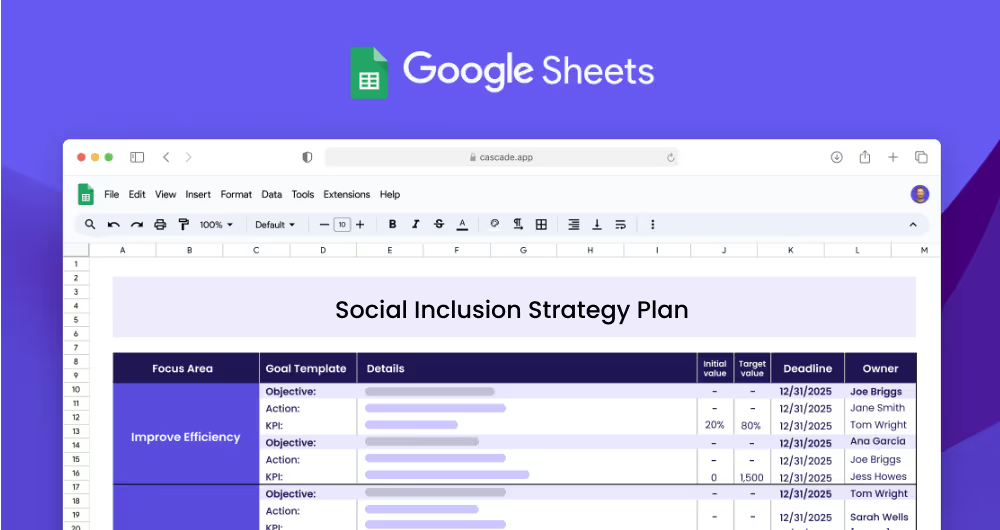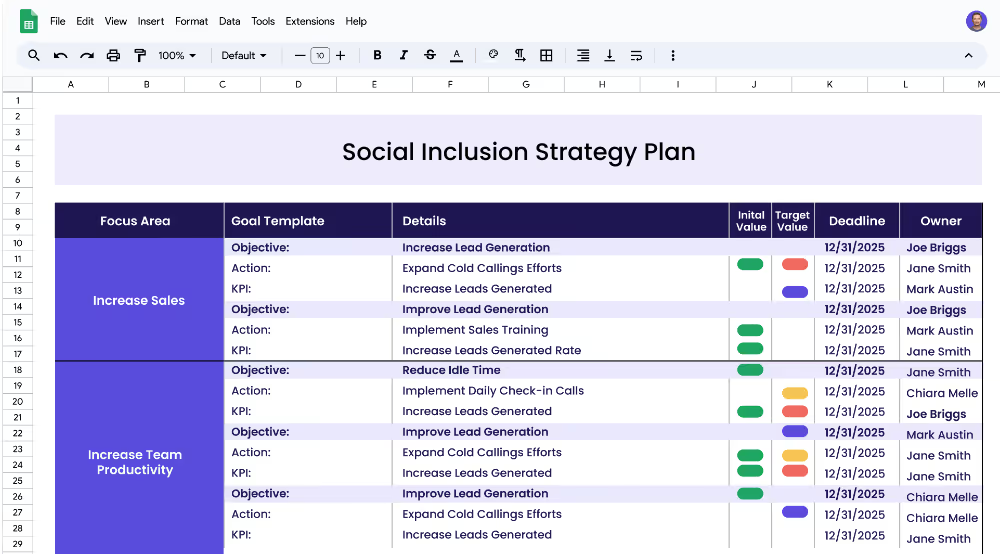A Social Inclusion Strategy Plan is an actionable and measurable plan to help companies and organizations of all sizes and industries improve their social inclusion strategies. It consists of identifying focus areas, setting objectives, developing action plans, and setting clear targets (KPIs) to measure the success of the plan. With a comprehensive plan in place, companies can ensure that their social inclusion goals are met with greater efficiency.
Each focus area has its own objectives, projects, and KPIs to ensure that the strategy is comprehensive and effective.
The Social Inclusion Strategy Plan template is designed to help companies and organizations of all sizes and industries create a comprehensive plan to improve their social inclusion strategies. It provides a framework for organizations to define their focus areas, objectives, action plans, and KPIs to measure success. This template can be used to develop a plan for any organization that wants to improve their social inclusion efforts.
The first step in creating a Social Inclusion Strategy Plan is to define your focus areas. These should be specific and measurable objectives that are related to your organization’s social inclusion goals. Examples of focus areas could include increasing social inclusion, accessibility, or communication. Be sure to define clear goals for each of these focus areas to ensure that your plan is effective.
Once you have identified your focus areas, you can create objectives that will guide your plan. Objectives should be specific and achievable goals that will help you to reach your focus areas. For example, if your focus area is increasing social inclusion, you may set an objective to develop a better understanding of diversity. This objective would then be broken down into actionable steps and measurable targets.
KPIs, or Key Performance Indicators, are measurable targets that can be used to track the progress of your plan. For example, if your objective is to increase staff understanding of diversity, you could set a target of 100% staff understanding. By setting KPIs, you can track and measure the success of your objectives and adjust your plan accordingly.
Once you have set your KPIs, you can then create projects to achieve them. A project (action) is a set of initiatives that are designed to help you reach your KPIs. For example, if your objective is to increase staff understanding of diversity, you could develop and implement diversity training as a project. This project would help you to reach your KPI of 100% staff understanding.
If you're looking to advance your strategy beyond traditional spreadsheets and experience faster, more impactful results, Cascade Strategy Execution Software offers a comprehensive solution. Cascade outperforms spreadsheets with real-time updates, centralized collaboration, and automated reporting, which simplifies tracking progress, adjusting strategies promptly, and maintaining alignment across all levels. Transition smoothly from planning to execution with visual dashboards that integrate your strategic activities seamlessly. Sign-up for free or book a demo with one of our experts to see how Cascade can turbocharge your strategic efforts.


